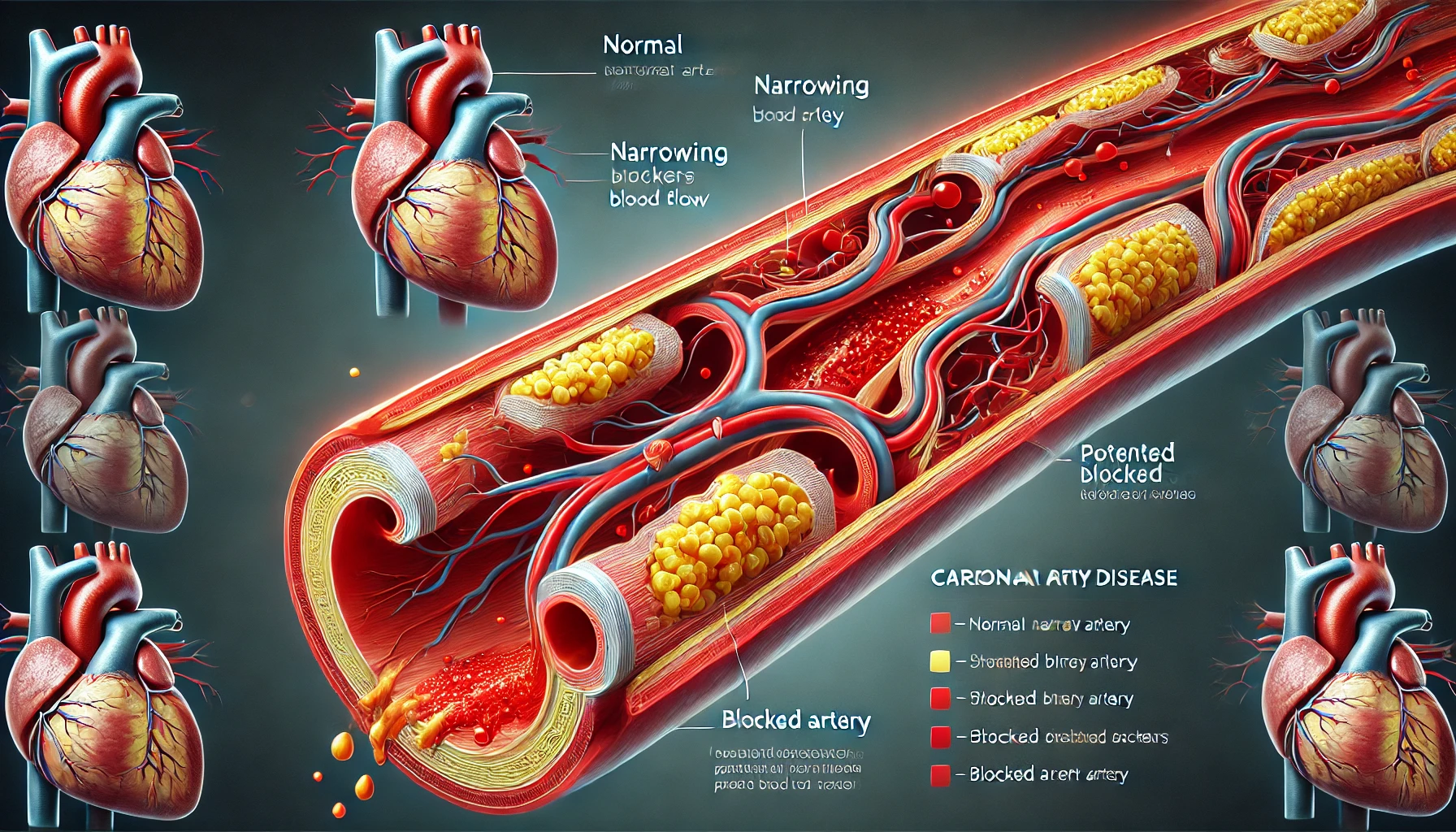
What is Aortic Disease?
Aortic disease refers to conditions affecting the aorta, the main artery that carries blood from the heart to the rest of the body. The aorta is the largest blood vessel in the body and is responsible for delivering oxygen-rich blood to all organs and tissues. When the aorta becomes diseased, it can lead to life-threatening complications.
Types of Aortic Disease
- Aortic Aneurysm: A bulge or ballooning in the aorta wall that can rupture, causing massive internal bleeding
- Aortic Dissection: A tear in the inner layer of the aorta that allows blood to flow between the layers, weakening the vessel wall
- Aortic Stenosis: Narrowing of the aortic valve, restricting blood flow from the heart
- Aortic Regurgitation: Leakage of blood back into the heart due to incomplete valve closure
- Aortic Coarctation: A congenital narrowing of the aorta, usually in the chest area
Causes and Risk Factors
- High Blood Pressure: The most common cause, putting constant stress on artery walls
- Atherosclerosis: Buildup of fatty deposits that weaken artery walls
- Genetic Conditions: Marfan syndrome, Ehlers-Danlos syndrome, and other connective tissue disorders
- Age: Risk increases significantly after age 65
- Smoking: Damages blood vessel walls and accelerates atherosclerosis
- Family History: Genetic predisposition to aortic problems
- Trauma: Car accidents or falls can damage the aorta
- Infections: Syphilis and other infections can weaken aortic walls
Symptoms and Warning Signs
Aortic disease can be silent for years, but when symptoms appear, they often indicate a medical emergency:
- Sudden Severe Chest Pain: Often described as "tearing" or "ripping" pain
- Back Pain: Pain between the shoulder blades
- Difficulty Breathing: Shortness of breath or rapid breathing
- Fainting or Dizziness: Due to reduced blood flow to the brain
- Weakness or Paralysis: If blood flow to the spinal cord is compromised
- Cold Sweats: Profuse sweating without exertion
- Nausea and Vomiting: Common with severe pain
- Hoarseness: If the aneurysm presses on vocal cord nerves
Diagnosis and Testing
Early detection is crucial for successful treatment. Your doctor may recommend:
- Chest X-ray: May show an enlarged aorta or calcium deposits
- Echocardiogram: Ultrasound of the heart and aorta
- CT Scan: Detailed cross-sectional images of the aorta
- MRI: High-resolution images without radiation exposure
- Angiography: X-ray with contrast dye to visualize blood flow
- Blood Tests: To check for underlying conditions
Treatment Options
Treatment depends on the type and severity of aortic disease:
- Medical Management: Blood pressure control, cholesterol management, and lifestyle modifications
- Endovascular Repair: Minimally invasive procedure using stents to reinforce the aorta
- Open Surgery: Traditional surgery to replace or repair the diseased aorta
- Valve Replacement: For aortic valve problems
- Emergency Surgery: For ruptured aneurysms or acute dissections
Prevention Strategies
While some risk factors can't be changed, many can be managed:
- Control Blood Pressure: Keep it below 130/80 mmHg
- Quit Smoking: Smoking significantly increases aortic disease risk
- Manage Cholesterol: Keep LDL cholesterol low and HDL cholesterol high
- Exercise Regularly: 150 minutes of moderate exercise per week
- Maintain Healthy Weight: Obesity strains the cardiovascular system
- Eat Heart-Healthy Diet: Low in saturated fats, high in fruits and vegetables
- Limit Alcohol: Excessive drinking can raise blood pressure
- Regular Check-ups: Especially if you have risk factors
When to Seek Emergency Care
Aortic disease can become life-threatening quickly. Seek immediate medical attention if you experience:
- Sudden, severe chest pain that feels like tearing or ripping
- Pain that radiates to your back, neck, or jaw
- Difficulty breathing or shortness of breath
- Fainting or loss of consciousness
- Weakness or paralysis in any part of your body
- Cold sweats and rapid heartbeat
Living with Aortic Disease
With proper management, many people with aortic disease can lead active, healthy lives:
- Regular Monitoring: Follow-up appointments and imaging tests as recommended
- Medication Compliance: Take prescribed medications exactly as directed
- Lifestyle Modifications: Maintain heart-healthy habits
- Stress Management: Learn relaxation techniques to manage stress
- Support Groups: Connect with others facing similar challenges

Connect With Us